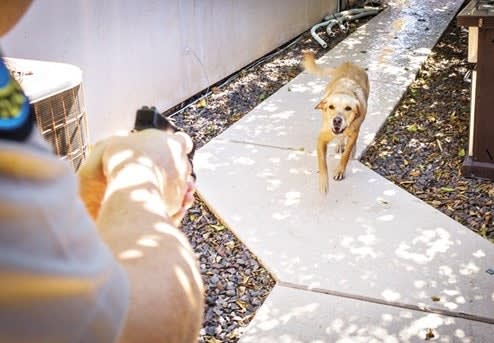1.) Don't fall prey to the temptation to kick a dog away. A dog can latch powerful jaws onto a pant leg and pull even a large officer off balance, opening up an attack in which the officer is grounded and potentially underneath a ferocious animal.
2.) TASERs can sometimes be effective in briefly slowing a dog attack, but that effect is usually insufficient to end one entirely. First and foremost, once the ECD charge is finished, the animal will have no physical ill-effects and is likely to resume their advance. Further, getting both probes into a quickly moving animal with a coat of fur is almost a matter of luck.
3.) Baton strikes may be an effective less-lethal force option (when a strike is sufficient to break a bone such as leg or rib and incapacitate the animal's advance) but a baton strike is such a close-proximity tactic that failure could result in imminent bite injury to the officer.
4.) Oleoresin Capsicum (OC) spray is probably the most effective less-lethal option against dog attack. The OC stream has a stand-off distance of up to a dozen feet and can shut down a dog's advance almost instantly upon contact. The dog's sense of smell—arguably one of the most acute in nature—can be quickly overcome by the OC, causing immediate (but temporary) respiratory problems.
5.) When approaching a location where a problem dog is already known to be present (either through information provided by dispatch or prior contacts with the location of the call), it's not a bad idea to have a CO2 fire extinguisher handy. This tactic should only be considered if two or more officers are at the scene—in essence, carrying a can of fire-retardant is a luxury reserved only for when there are ample personnel to provide extra hands.













